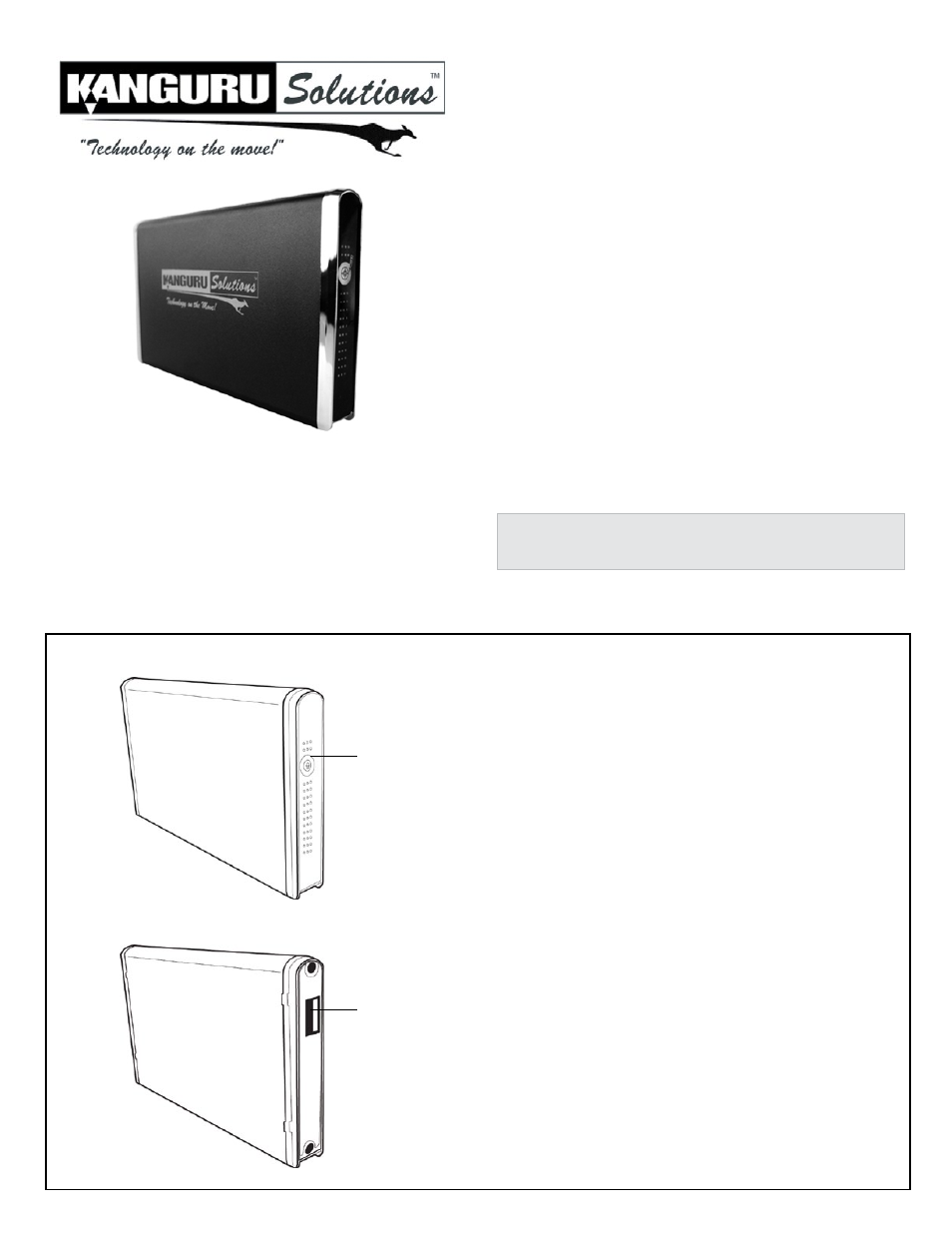Kanguru QSSD Quick Start User Manual
Kanguru qssd external ssd usb3.0 quick start guide, Introduction, General operation

Kanguru QSSD External SSD USB3.0
Quick Start Guide
03.12.12 vrs.1 © 2012 Kanguru Solutions
Legal terms and conditions available at www.kanguru.com.
Please review and agree before use. Thank you.
Introduction
Thank you for purchasing the Kanguru QSSD External SSD USB3.0
from Kanguru Solutions!
By combining solid state storage technology and USB3.0 SuperSpeed,
the Kanguru QSSD can deliver the fastest transfer rates available in
a portable, external drive. Designed for lightning fast read and write
speeds and convenient portability, the Kanguru QSSD provides
exceptional performance for the dollar.
Package Contents:
• Kanguru QSSD
• USB3.0 Y-type cable
• Quick Start Guide
• Registration Form
System Requirements:
• Notebook or desktop computer
• Windows XP/Vista/7 (32 and 64-bit compatible)
• Mac; Mac OS X 10.4 and above
• 1GB RAM or above
• Pentium 4, 2GHz processor or equivalent
• USB port (USB3.0 port required for maximum transfer rates)
Note: This is a Quick Start Guide only. For further information about your
QSSD, please refer to the User Guide. A digital copy of the User Guide can be
found on your QSSD or downloaded at:
http://support.kanguru.com
General Operation
The Kanguru QSSD operates the fastest when connected through a
USB3.0 port. Although the Kanguru QSSD is backwards compatible
with USB2.0 and USB1.1, you will get optimal performance through
USB3.0.
Connecting Your Kanguru QSSD
Your Kanguru QSSD is completely bus powered so no external power
adapters are needed. Simply connect your QSSD to your computer
using the USB3.0 cable that came included.
One end of the cable has a single USB connector, the other end has
dual USB connectors. The single USB side is connected to the QSSD’s
USB3.0 port. The dual USB side is connected to your computer.
Note: The dual ended USB side has a black connector and a white
connector. The black connector is the primary connector. The white
connector provides auxiliary power and must also be connected if the
drive is not able to draw enough power through the primary connector
alone.
Once the you have connected your QSSD to your computer using the
provided cable, the LED Activity Indicator on the front of the drive
will light up, indicating that the drive is powered on.
Windows users will see a new drive appear in My Computer.
Mac users will see a new drive appear on the Desktop.
Your Kanguru QSSD is now ready for use.
LED
Activity
Indicator
USB 3.0
Port
Front
Back
